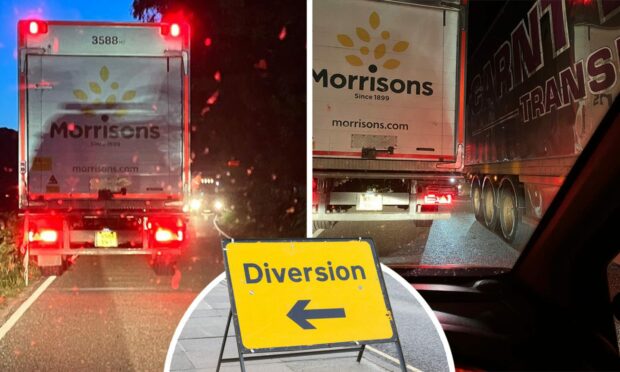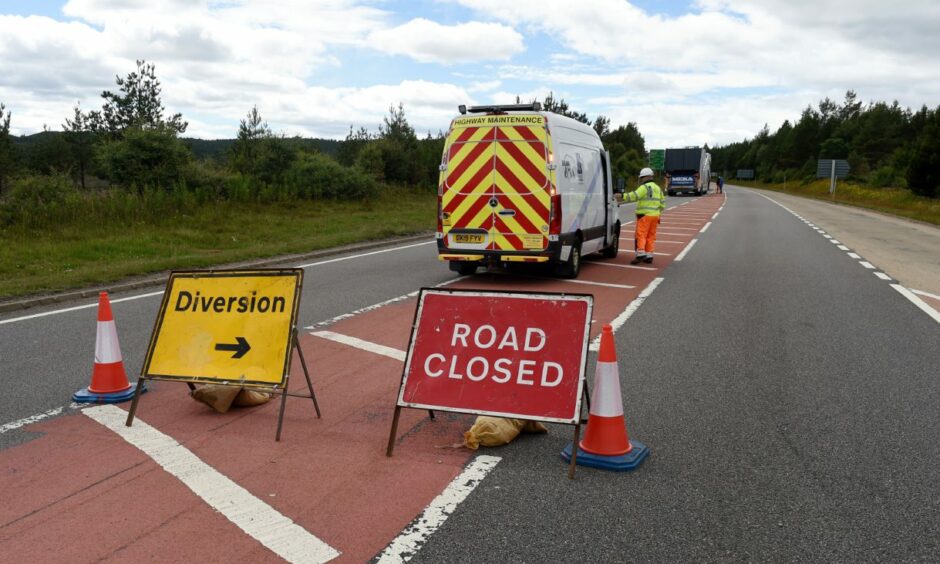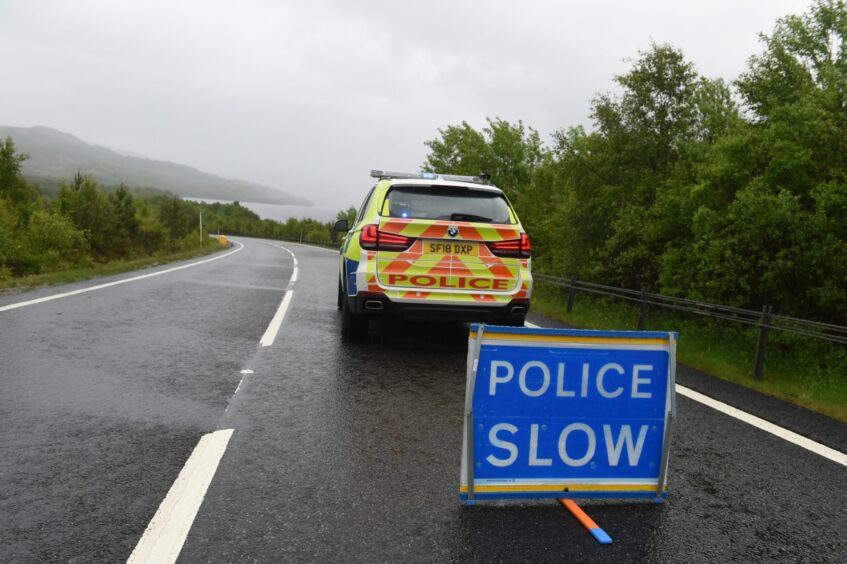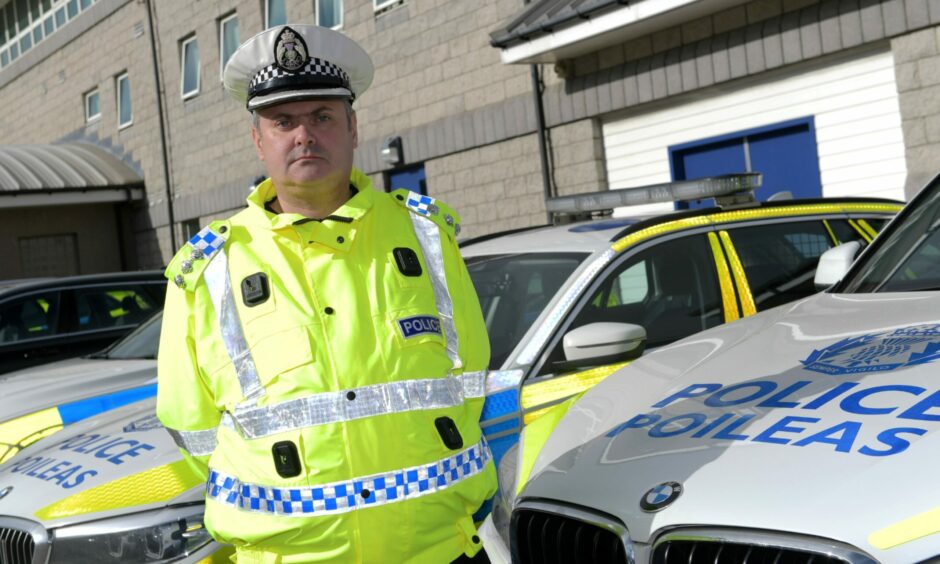Motorists have described an A9 diversion route as “stupid” after all the traffic from the Inverness to Perth trunk route was funneled into a single carriageway.
Lorries struggled to pass each other on the A86 Spean Bridge to Newtonmore road and drivers reported taking more than four hours to move just 24 miles.
Motorists have now demanded alternative arrangements are made when the A9 is closed for serious accidents – warning using the same road again could risk another emergency.
Police say they have pre-agreed diversion routes with Transport Scotland and local authorities to use when trunk routes are closed unexpectedly.
Bear Scotland has confirmed discussions are now underway with local officers to establish how improvements can be made to manage closures in this area.
Tragedy closed A9
The busy A9 route was closed last Wednesday following a fatal two-vehicle crash near Newtonmore, which claimed the lives of three people.
A 75-year-old man and a 45-year-old woman were pronounced dead at the scene.
A 46-year-old woman was taken to Ninewells Hospital in Dundee but died on Sunday.
A 108-mile stretch of the A9 was closed in both directions for more than eight hours as crash investigators surveyed the scene.
Meanwhile, motorists were diverted along the A86 Kingussie to Spean Bridge road and A889 Laggan to Dalwhinnie road to help diffuse the congestion.
However, the decision led to hours of gridlock traffic for drivers and motorists.
HGV lorries were struggling to pass each other due to the width of the carriageway resulting in nose-to-tail traffic and congestion.
Road users and local representatives are now calling for authorities to take more careful consideration of traffic management to prevent such chaos in the future.
‘Nose to tail traffic wasn’t moving’
Fort William business owner Chris Jones had a five-hour journey home after being stuck in gridlocked traffic along the A86.
It took the Highland businessman around four and a half hours to travel just 24 miles from Aviemore to Laggan.
He says the route was highly inadequate to cater to that level of traffic.
He said: “To divert all A9 northbound and southbound traffic to the road from Newtonmore to Spean Bridge, certainly through Lagan, that’s just stupid.
“It was nose to tail and the traffic wasn’t moving. Everyone was just stopping their engines and switching the lights off and you would sit there for an hour without moving an inch.
“I was following behind a Morrisons arctic and its wheels were so far off the verge that if it had collapsed, that whole trailer would have gone down the bank and then what happens?
“In 50 years of driving, I have never seen anything like it. It was brutal.”
Mr Jones, director of Norfab Equipment Ltd, feels greater awareness is needed by police of the Highlands road network.
He feels the centralisation of police has been a “disaster”, resulting in the rapid decline in localisation among the force.
“I think there needs to be more training and more local awareness of what the road network is like across Scotland for people on the desk,” he added.
“The A9 is not a great road to begin with but diverting onto what’s effectively one and a half vehicle lanes, that is bonkers.”
Calls for safer options to be considered
Frazer Coupland, chief executive of Lochaber Chamber of Commerce feels stacking traffic along the A9 would have been the safer option on this occasion.
He says diversion routes need to be more carefully thought out.
“I think much more careful thought has to go into traffic management rather than reactionary first thinking,” he said.
“In that case it was very reactionary, sending all that traffic through those two villages onto the alternative routes.
“Sometimes it is safer just to bank people up. It is not what people want but it is safer and we see this on the A82 all the time – where they give you mad diversions.
“Consideration has to always be given to traffic management but I do understand it has to be very difficult.”
‘Police work in dynamic situations’
Superintendent Stewart Mackie said with rural areas, particularly in the Highlands, diversion options are sparse.
However, a number of pre-agreed routes have already been mapped out in preparation for an emergency road closure.
He said: “Road policing officers work in dynamic situations and have to make quick decisions to ensure the safety of all road users whilst dealing with varying degrees of incidents.
“We work with Transport Scotland and local authorities when we have to close roads to deal with incidents and have pre-agreed diversion routes along major roads such as the A9.
“Scotland has a vast road network, however in our more rural areas there may not be as many diversion options available.
“On this occasion officers were attending a crash involving a car and an HGV where three people sadly lost their lives.
“The vast majority of the public we encounter are cooperative and sympathetic when we have to put a diversion in place and we thank them for this.”
Bear Scotland officials say they are aware of the disruptions and are working to put better plans in place for the future.
A spokesman said: “After the fatal accident on the A9 at the junction with the B9150, traffic was diverted along the agreed Standard Incident Diversion route.
“We are aware of the delays that this caused and following an incident de-brief we are in discussion with Police Scotland on how best to manage closures at this location in future.”
A Highland Council spokeswoman added: “The diversion was implemented by Bear Scotland’s, north-west unit using the trunk roads A86 and A889. As this was not a diversion route where they diverted onto a local authority road, they did not liaise with Highland Council.”






Conversation